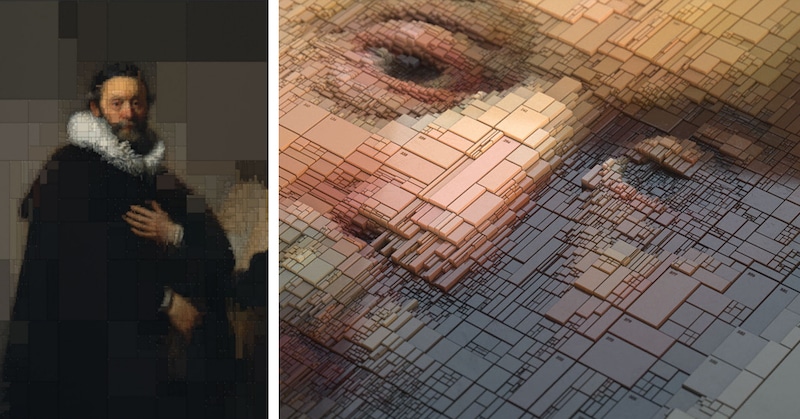Community, Leadership, Experimentation, Diversity, & Education
Pittsburgh Arts, Regional Theatre, New Work, Producing, Copyright, Labor Unions,
New Products, Coping Skills, J-O-Bs...
Theatre industry news, University & School of Drama Announcements, plus occasional course support for
Carnegie Mellon School of Drama Faculty, Staff, Students, and Alumni.
CMU School of Drama
Tuesday, February 13, 2018
Designer Creates "Algorithm Art" for 3D Color Study of Historic Portraits
mymodernmet.com: Athens-based art director and visual designer Dimitris Ladopoulos breathes new life into centuries-old paintings. Blending traditional art with new technology, Ladopoulos inventively employs an algorithm that transform historic portraits into complex contemporary studies of color.
Subscribe to:
Post Comments (Atom)

2 comments:
I love when art and technology combine. This case is especially interesting because technology is being applied to art that was created when this technology wasn’t even a thought, and thus it transforms this classical masterpiece into a new viewing experience where the implementation of technology enhances the viewer’s perception of the artist’ original mastery of the medium, in this case paintings. The way this tech makes a new visual for viewers to see is so cool. To look at these painting side by side, painting pre and post algorithm, makes you see the dynamic tone of the original piece. What would also be really cool is if this could go one step further. Which would be to print this cubed map of the paining with the layers of the cubes. In the renderings of the images on the screen you can tell that the tonal rectangles are not all on the same level, but they have different heights. I’m not sure how that height was determined but the algorithm because the article didn’t touch on it but I think it would be really cool to take this 2D painting and make it into a 3D topographic map of color.
Amazing. It gives me a whole new way to look at a painting and pay more attention to the detail that is less talked about. In this case, it’s the various ways that an artist uses color and brush strokes to create the very finite shifts in color, light, and shadow. I am less fascinated with the 3-D rendering, although still consider it really cool, but more so I am interested in the millions of different colors that are used to make a simple portrait. It’s so mind blowing to see what the artist did in terms of the layers of color to create the rich dark hues that to a normal human eye are so subtle that they are not readily viewable. Here we have a computer algorithm that works to break out all the different colors and shades of the artist's palate. This will be fundamental in the study of painting and conservation. Conservators will have a much better time repair damage done to a painting by knowing the information this algorithm uses.
Post a Comment